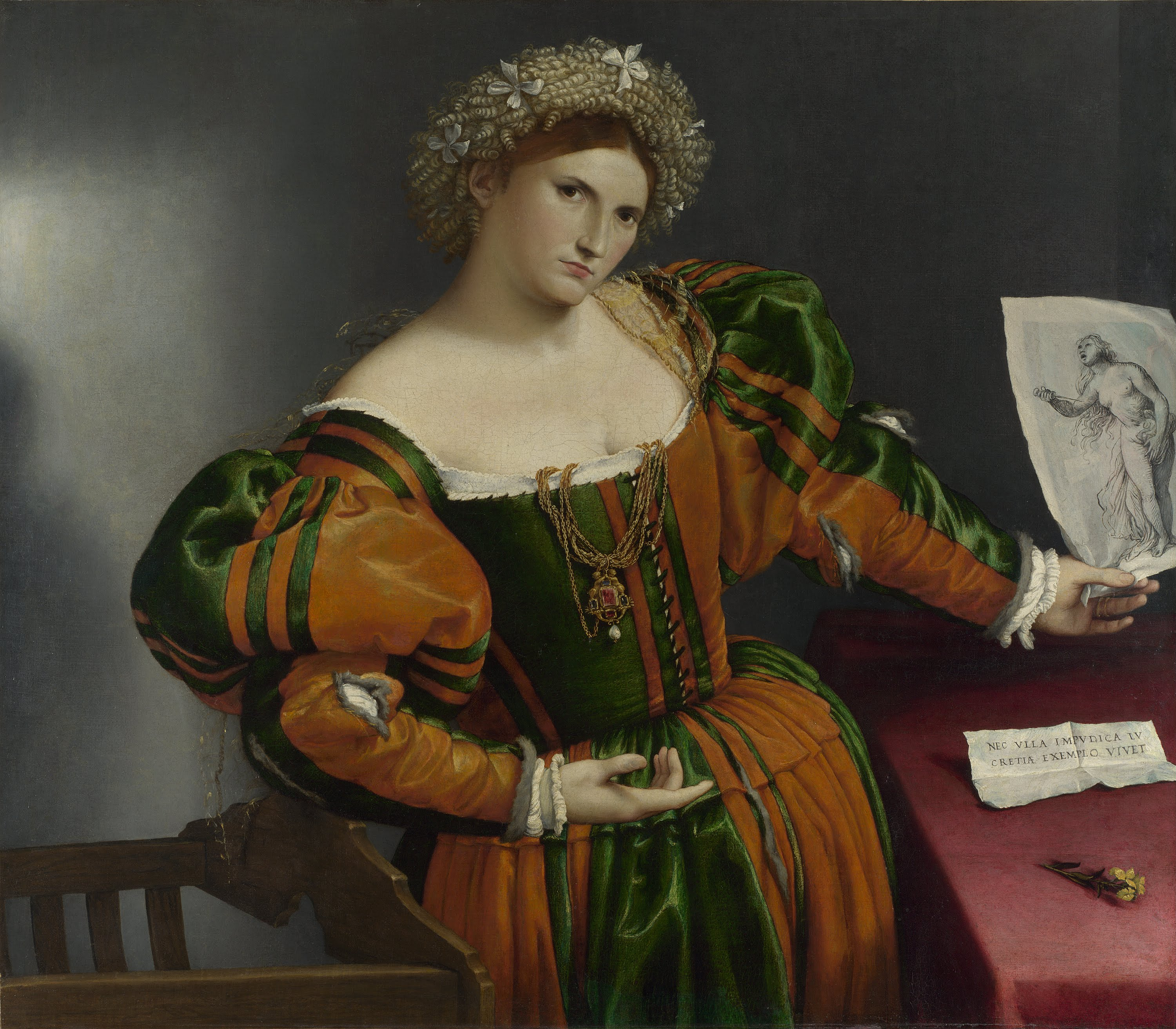Lotto was one of the leading Venetian-trained painters of the earlier 16th century. He painted portraits and religious works exclusively. His early works are strongly influenced by Giovanni Bellini. Lotto was active in various places in Italy and absorbed a wide range of other influences, from Lombard realism to Raphael. He was deeply religious and his late paintings become intensely spiritual.
Unable to compete with Titian, Lotto worked mainly outside Venice.
The woman who leans to the side has not been conclusively identified. Dressed in an elaborate and softly painted costume of gleaming green and orange, she directs attention to a drawing held in her left hand. This shows her Roman namesake, Lucretia, about to stab herself after she had been raped by the son of King Tarquin.
The transparency of the paint reveals that Lotto originally depicted Lucretia in colour, not as a monochrome drawing. The portrait, while displaying the beauty of the sitter, also proclaims her virtue. The message is underlined by the Latin inscription on the paper on the table, taken from the Roman historian Livy: 'After Lucretia's example let no violated woman live'.


 Lorenzo Lotto
Lorenzo Lotto